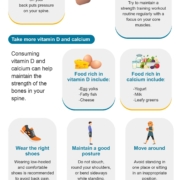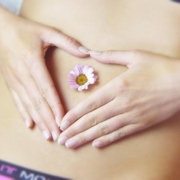Stress Management for MSK Well-being: Mind-Body Techniques
Stress. We all experience it. But did you know that stress can significantly impact your musculoskeletal (MSK) health? From tight muscles and back pain to headaches and reduced mobility, stress can manifest physically and worsen existing MSK conditions. Learning to manage stress is crucial for overall well-being, including the health of your bones, joints, and muscles. This article explores practical mind-body techniques to help you manage stress and improve your MSK health.
Understanding the Mind-Body Connection
Your mind and body are constantly interacting. When you experience stress, your body releases hormones like cortisol and adrenaline. These hormones prepare your body for “fight or flight,” causing muscle tension, increased heart rate, and rapid breathing. Over time, chronic stress can lead to:
Muscle pain and stiffness: Constant tension can cause pain in your neck, shoulders, back, and other areas.
Headaches: Tension headaches are often triggered by stress.
Worsening of existing MSK conditions: Stress can exacerbate conditions like arthritis, fibromyalgia, and back pain.
Reduced mobility: Pain and stiffness can limit your ability to move freely.
Difficulty sleeping: Stress can disrupt sleep patterns, further impacting MSK health.
Mind-Body Techniques for Stress Reduction
Several mind-body techniques can help you manage stress and improve your MSK well-being. These techniques focus on connecting your mind and body to promote relaxation and reduce tension.
1. Deep Breathing Exercises
Deep breathing is a simple yet powerful technique to calm your nervous system. When stressed, your breathing becomes shallow and rapid. Deep breathing helps slow your heart rate, relax your muscles, and reduce anxiety.
Diaphragmatic Breathing: Place one hand on your chest and the other on your stomach. Inhale deeply through your nose, feeling your stomach rise while your chest remains relatively still. Exhale slowly through your mouth, feeling your stomach fall. Practice this for 5-10 minutes daily.
Box Breathing: Inhale for a count of four, hold for four, exhale for four, and hold for four. Repeat this cycle several times.
2. Mindfulness Meditation
Mindfulness involves paying attention to the present moment without judgment. It helps you become more aware of your thoughts, feelings, and bodily sensations, allowing you to observe stress without getting carried away by it.
Body Scan Meditation: Lie down comfortably and close your eyes. Bring your attention to different parts of your body, starting with your toes and moving upwards. Notice any sensations without judgment.
Mindful Walking: Pay attention to the sensation of your feet on the ground, the movement of your body, and the sights and sounds around you.
3. Progressive Muscle Relaxation
This technique involves tensing and relaxing different muscle groups in your body. It helps you become more aware of muscle tension and learn to release it consciously.
Start with your toes: Tense your toe muscles for a few seconds, then relax them completely. Notice the difference between tension and relaxation.
Work your way up your body: Tense and relax each muscle group, including your calves, thighs, buttocks, abdomen, chest, shoulders, arms, hands, and face.
4. Yoga and Tai Chi
These gentle movement practices combine physical postures, breathing exercises, and meditation. They improve flexibility, strength, balance, and reduce stress.
Yoga: Various yoga styles cater to different needs and abilities. Choose a style that suits your fitness level.
Tai Chi: This slow, flowing martial art promotes relaxation, balance, and coordination.
5. Guided Imagery
Guided imagery involves using your imagination to create relaxing and peaceful mental images. It can help reduce stress, improve sleep, and manage pain.
Nature scenes: Imagine yourself in a peaceful natural setting, such as a beach, forest, or mountain.
Safe places: Visualize a place where you feel safe and secure.
Putting it All Together
Managing stress is an ongoing process. Experiment with different mind-body techniques to find what works best for you. Incorporate these practices into your daily routine for lasting benefits.
Start small: Begin with a few minutes of deep breathing or mindfulness each day.
Be consistent: Regular practice is key to managing stress effectively.
Listen to your body: Pay attention to your body’s signals and adjust your practice accordingly.
Seek professional help: If you’re struggling with chronic stress or a mental health condition, seek professional guidance.
Additional Resources
The American Psychological Association: apa.org
* The National Institute of Mental Health: nimh.nih.gov
By incorporating these mind-body techniques into your life, you can effectively manage stress, improve your MSK health, and enhance your overall well-being. Remember, taking care of your mental health is just as important as taking care of your physical health.









